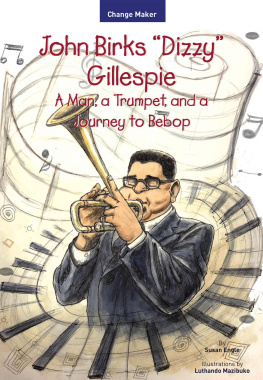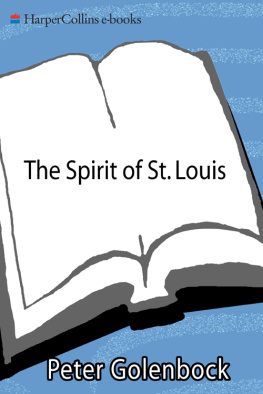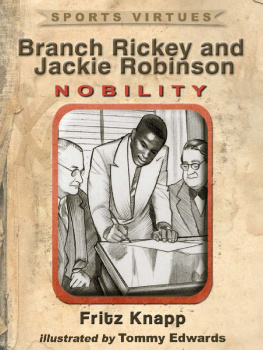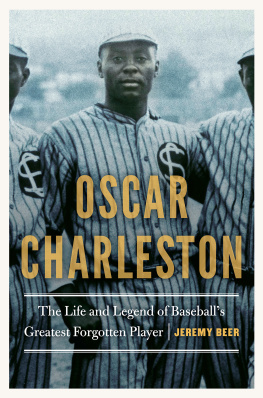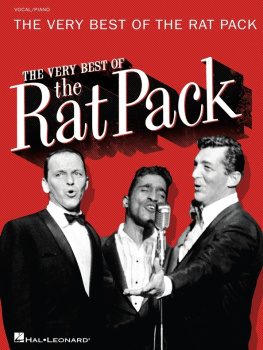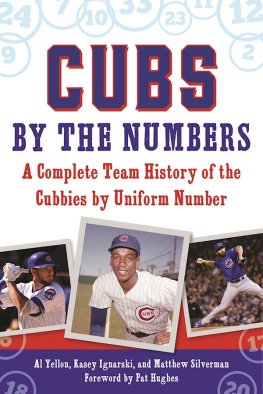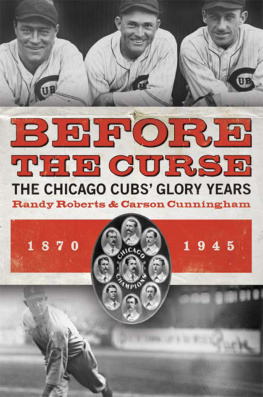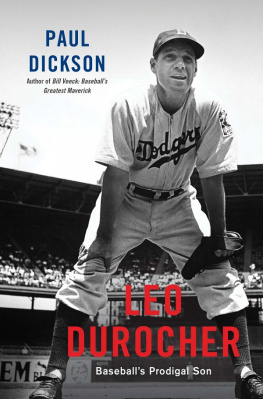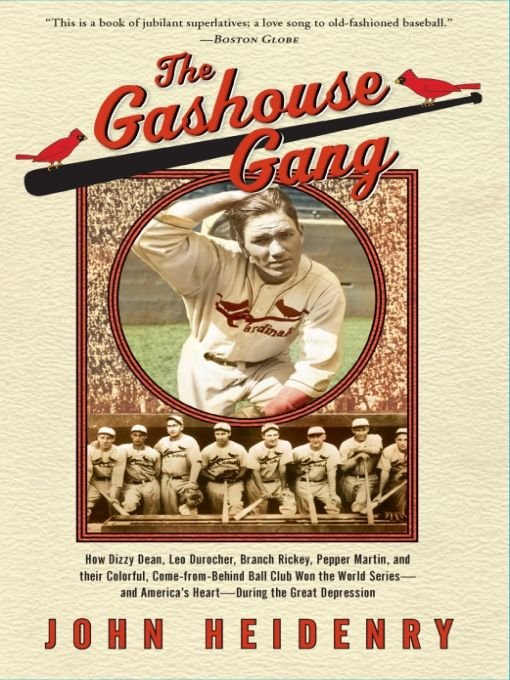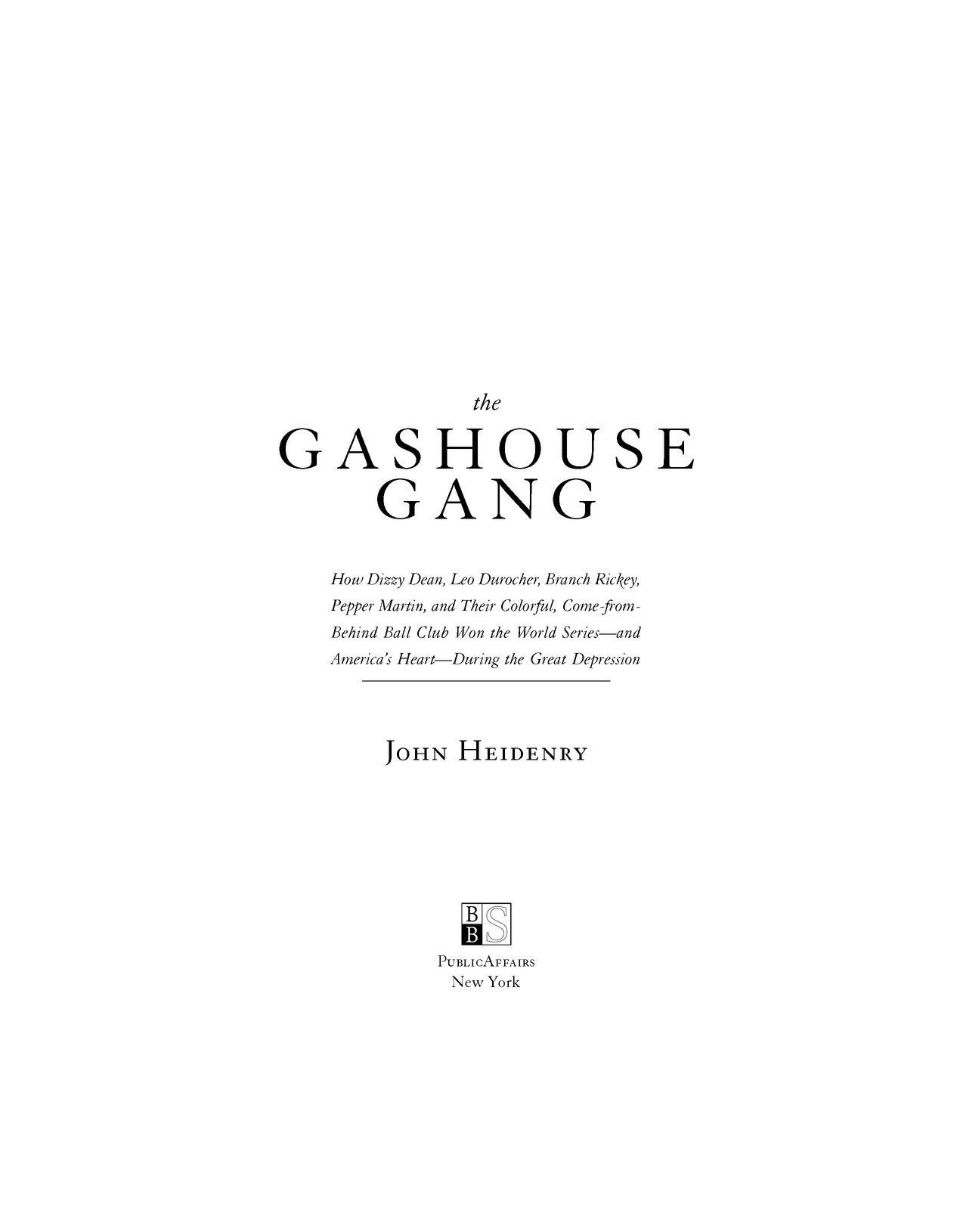Table of Contents
Praise for The Gashouse Gang
The best account Ive read of the St. Louis Cardinals improbable championship season of 1934....
Russ Smith, Wall Street Journal
The 1934 St. Louis Cardinals were not nice guys. But then, a lot of early ballplayers werent. They tended to be scrappy, not-very-educated kids with tempers who would do about anything to win the game they werent paid a whole lot of money to play. The 1934 Gashouse Gang took this general profile to a higher level, with odd birds like Dizzy Dean, nasty fellows like Leo Durocher and Joe Medwick and fine players like Frankie Frisch and Pepper Martin, who somehow put all their talents together for a great season. Heidenry outlines, with a mix of respect and bemusement, just how they all survived it, while making it clear why it proved so difficult to replicate.
New York Daily News
The book places its baseball in the context of the Great Depression, yet any chapter will give readers an upsurge of energy as they relive the season with this gang.
Library Journal
The Gashouse Gang is ... a nostalgic return to a time and place where ballplayers had names like Heine Meine, and big, rawboned country boys chewed tobacco when they werent chewing up the basepathsblue-collar baseball at its best.
Palm Beach Post
Heidenry ... carefully researched newspaper accounts, player biographies, and baseball histories for the anecdotes and game accounts that provide the substance for another highly readable slice of baseball history.... A memorable, engaging account of a great baseball team made up of many of the games most colorful characters.
Booklist
Among the annual proliferation of baseball books, this one will stand out for the quality of the writing and the facinating story it tells of the famous Gashouse Gang of St. Louis and their triumph in the 1934 World Series over a very good Tigers team. This is the likes of Dizzy Dean, Pepper Martin, Frankie Frisch and Joe Medwick rollicking through a different era and defeating The Tigers of Hank Greenberg, Charlie Gehringer, Mickey Cochran and Goose Goslin. Good stuff. Good book.
FAY VINCENT, former commissioner of Major League Baseballl
The Gashouse Gang is a solidly researched and warmly told account of that team and season, with a special focus on star hurler Dizzy Dean.... Other Cardinals who come alive in Heidenrys well-written text are Leo Durocher, Pepper Martin, Frankie Frisch, Joe Medwick, and Deans younger brother, Paul.
Bookpage
Heidenry draws on plenty of sourcesincluding contemporary newspaper reportsto offer a balanced picture of the team, and even discloses that its Gashouse Gang nickname was not pinned on the team until 1935 ... [T]his is certainly a credible look at baseball at the height of the Great Depression.
Tampa Tribune
To my uncle
Lawrence M. Morrison,
a member of the 1934 Knot Hole Gang
Thank you, Larry, for everything
PREFACE
The year 1934 was among the most extraordinary in U.S. history, and the baseball season that year was among the most storied in the annals of the sport. In that year, a squad of quarreling, slovenly, brilliant misfits known to legend and lore as the Gashouse Gangand officially as the 1934 St. Louis Cardinalscaptured the imagination of a country in the throes of desperate social unrest and turmoil unlike anything it had ever experienced before, outside the battles fought on American soil, or has since.
The same could be said of the Gashouse Gang. They were the unique product of a particular time and placemostly men who had known extreme poverty and hardship in the South and West, with a few hard-nosed kids from eastern states thrown in for variety. Among their number were a couple of ex-sharecroppers, a pool shark, a handsome dandy who worked as a Hollywood double in the off-season, a grease-stained third baseman who liked to drive his midget auto racer around a track before a game, a surly outfielder who punched any of his own teammates if they looked at him in the wrong way, and even a couple of college kids. Collectively, as the Gashouse Gang, they were the creation of a pious, nonimbibing Methodist who would not even watch them play on a Sunday because his religious principles forbade it.
Who could have thought up such a cast of characters, or the thrilling story of their pennant drivewhen, just to make things even more interesting, their star player decided to go on strike and even made a bonfire of his uniform to show how mad he was at the way he was being treated by management?
Yet the 1934 Cardinals were more than just unusually colorful ballplayers. To a man, they were among the finest athletes ever to play the game. The story of their achievement has never been fully chronicled until now.
As occasion warrants, the world outside baseball occasionally intrudes in the course of this narrative. Yet every page lives and breathes the spirit and day-to-day reality of that soul-trying time.
As the 1934 season got under way, the Depression had just reached rock bottom, and a new mood had begun to take hold of the country. In January, President Franklin D. Roosevelt had asked Congress for $10.5 billion to advance recovery programs over the next year and a half. That same month, Congress had passed the Gold Reserve Act, giving the president the power to devalue gold deposits in the United States. The country returned to a modified gold standard, with a devalued dollar. As public confidence increased, the hoarding of gold all but ceased, paper currency and gold flowed back to the banks, and deposits rapidly increased. We have nothing to fear but fear itself, Roosevelt had told the nation during his inauguration the previous March, and he reiterated that message in his popular Fireside Chats, broadcast over the radio. Finally, people were beginning to believe him.
The year 1934 is also synonymous with massive unemployment, mile-long bread lines, and the westward migration that began when Oklahoma, Kansas, Texas, and Arkansas turned into a giant Dust Bowl, and the skies would darken under a cloud of dust half a continent long. John Steinbeck described in his novel The Grapes of Wrath the great Dust Bowl drama that was unfolding while the Gashouse Gang fought its epic battles on baseball fields on the other side of the country: And then the dispossessed were drawn westfrom Kansas, Oklahoma, Texas, New Mexico, from Nevada and Arkansas, families, tribes, dusted out, tractored out. Car-loads, caravans, homeless and hungry; twenty thousand and fifty thousand and a hundred thousand and two hundred thousand. They streamed over the mountains, hungry and restlessrestless as ants, scurrying to find work to doto lift, to push, to cutanything, any burden to bear, for food.
As Charles C. Alexander noted in Breaking the Slump: Baseball in the Depression Era, the 1930s were also the heyday of a small but determined U.S. Communist Party, which as early as March 1930 organized a rally in New Yorks Union Square that brought out thirty-five thousand demonstrators. If the smell of revolution (and sometimes tear gas) was in the air for much of the thirties, what was perhaps even scarier for middle-class Americans who had worked hard to accumulate savings was the epidemic of bank failures4,377 in allfrom 1930 to March 1933.


